Isometric Exercise
Table of Contents
What is Isometric exercise?
Isometric exercise involves prolonged contractions of a specific group of muscles, sometimes referred to as static strengthing training. Simply described, an isometric exercise makes it necessary to involve muscles without causing them to move. Instead, you choose and maintain one position. For instance, the muscles are moving but not actively altering sizes when performing a plank or a wall sitting.
Isometric exercises are performed in one posture without moving, because of that they only increase strength in that one particular position. To strengthen your muscles through the range of motion, you would need to perform a lot of isometric workouts.
Since isometric exercises can add stress to the muscles with little joint and muscle movement, they are frequently included in rehabilitation programs. As a result, a person can heal an injured location while regaining strength and physical endurance there.
Presses pull, and holds are the three rudimentary isometric workout variations. They can be used in a strength training program to enhance the body’s capacity to exert force from that position or, in the situation of isometric holds. This can be used to enhance the capacity to hold a position for an extended amount of time. Isometric presses, when seen as a movement, are also most important for the body’s capacity to become ready immediately following power actions. This is also called an isometric preload
The Benefit of Isometric exercise
An action is considered to be isometric when the observable angle of the joints is maintained. Although this definition is universally applicable, several sub-definitions highlight the effort that is put ahead during particular isometric exercises. The goal of a proceed isometric workout is to sustain a specific bodily position; this is often referred to as sustaining an isometric hold.
It is the goal of an overcoming isometric workout to push or pull opposite either another portion of the body that pushes or pulls backward with the same level of effort or to move a solid object. This justifies the terms “overcoming isometric” “isometric press” and “isometric pull,” respectively.
Isometrics without weights
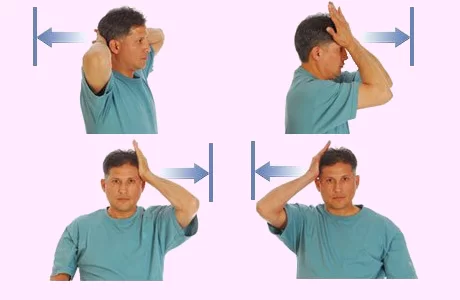
Nonweighted isometric exercises include the exerciser just using their own body as resistance. For instance, maintaining a crouching posture or squeezing the palms of the hands simultaneously. Own-resistance or Dynamic Tensions training is used when the self pushes back against the self.
Ex.neck isometric exercise
Isometric applying weighting
Weighted isometric exercises include pushing or dragging a fixed weight or structure while also holding an additional weight. For instance, the dumbbell can be maintained in an unchanged position while performing a bench press setup and not permitted to rise or fall. A person can also attempt to draw a stationary, immovable bar upwards with the use of a mid-thigh pull setup.
Isometric hold and dynamic movement
Isometric exercise is typically included in a larger training schedule and is rarely utilized as a single exercise. For instance, a plyometrics routine can include an isometric plank. Additionally, supporting groups of muscles can work isometrically during a dynamic movement. For instance, when performing a squat while holding a set of dumbbells in front of the chest, the arm movement will be comparatively isometric while the leg movement will be dynamic. Weightlifters frequently hold a dumbbell overhead with straight forearms while extending their legs as they rise from a squat position. This is an example of an isometric hold and dynamic movement.
As a result, the legs can carry the bulk of the weight.
However, it is uncommon to use an original isometric action in most sporting contexts. For instance, a skier constantly keeps a crouching position while doing skiing. Although this might be regarded as an isometric pause, there is some dynamic movement because the skier changes how deeply they bent down as they move. Thus, even though skiing is not entirely isometric, isometrics can be indicated to be participating in and favorable to the sport’s overall action.
For isometric motions, force measurement devices
Force measurement plate
The subject must stand on a force measuring plate to complete this test. Their combined weight and physical force push down on the plate, giving a readout. The basis for the subject’s downward pushing action is typically their pressing or tugging against anything that causes them to push downward. For instance, in
The subject must stand on a force measuring plate to complete this test. Their combined weight and physical force push down on the plate, giving a readout. The basis for the subject’s downward pushing action is typically their pressing or tugging against anything that causes them to push downward. For instance, in a workout called a mid-thigh pull, the person is supposed to pull in an upward direction on a steady barbell that is situated around their mid-thigh region. As a result of this movement they press down on the plate with their feet in addition to their body weight
Dynamometer
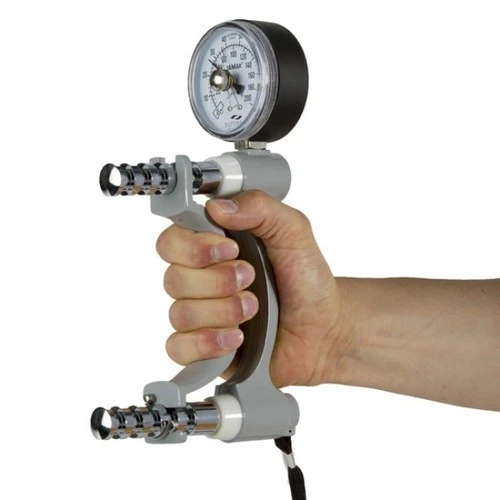
A dynamometer is a tool that measures the force applied by pushing, pulling, or compressing two handles together, or pushing or pulling them apart. There is relatively little motion and the action stays mostly isometric because the handles are usually fairly stiff. For instance, a dynamometer can be utilized for evaluating grip strength. The participant squeezes the dynamometer’s two handles together while holding it in one hand, which records a force reading on the gauge.
Electromyograph
An electromyograph uses electrodes that are either applied to the muscle as pads or introduced into it as needles to assess the level of muscle activation. For both presses and pulls in addition to isometric holds, it can quantify the degree of muscle activation. The mechanical assessment of the force used and the electromyographic assessment of muscle activation are often highly correlated.
Advantages of isometric exercise
Many exercise programs combine more dynamic exercises with some isometric movements.
They are effective exercises for simultaneously engaging lots of muscle fibers.
Compared to some dynamic actions, like squats, they take less practice to do exercises with good form.
They are appropriate for those whose injuries or medical conditions limit movement. For those with osteoarthritis, isometric workouts are appropriate.
Build muscular endurance
Isometric exercises, such as planks, require you to hold a single posture for what may feel like hours. As a result, they help you develop muscular endurance, or your muscles’ capacity to perform for a long time. You will contract every muscle in your core, including the erector spine, obliques, and abdominals, for a predetermined period when performing a forearm plank. By doing this, you’re training your core muscles to work together and to brace for an extended period, two skills necessary to run, lift heavy objects, walk, or even stand.
The Disadvantage of isometric exercise
Isometric exercise is a kind of strength training that includes holding a static posture for a longer period of time. While it can be an effective way to build muscle strength and endurance, there are some disadvantages to this type of exercise.
1. Limited range of motion: Isometric exercises only work the muscles in a specific position, which can limit their overall range of motion. This can make it difficult to perform certain activities or movements that require more flexibility.
2. Plateau effect: Over time, the body can adapt to the stress placed on it during isometric exercises, leading to a plateau effect where progress slows or stops altogether. To continue seeing results, it may be necessary to switch up the exercises or add additional resistance.
3. Time-consuming: Isometric exercises typically require holding a position for an extended period, which can be time-consuming and may not be practical for those with busy schedules.
4. Not suitable for all fitness levels: Isometric exercises can be challenging for beginners or those with limited mobility, as they require a certain level of strength and endurance to perform properly.
5. Risk of injury: As mentioned earlier, there is a risk of injury associated with isometric exercises, particularly if proper form and breathing techniques are not maintained.
Risk of isometric exercise
Isometric exercises are typically less demanding on the primary groups of muscles. Isometric workouts can be safer, but they still run the risk of injuring people or making existing ailments worse.
The injury might also result from performing isometric workouts incorrectly. For instance, performing a plank improperly might cause the lower back to become more tense and perhaps injure itself.
When doing an isometric exercise, one should stop right away if they experience any pain or discomfort.
1. Increased blood pressure: Isometric exercises can cause a temporary increase in blood pressure, which can be dangerous for people with high blood pressure or heart disease.
2. Muscle strain: Holding a static position for an extended period can put a strain on the muscles, leading to muscle soreness or injury.
3. Joint pain: Isometric exercises that involve holding a position can put pressure on the joints, causing pain or discomfort.
4. Dizziness or lightheadedness: Holding your breath during isometric exercises can cause a decrease in oxygen levels, leading to dizziness or lightheadedness.
To reduce the risk of injury during isometric exercises, it’s important to start with low-intensity exercises and gradually increase the intensity and duration over time. It’s also essential to maintain proper form and breathing techniques during the exercises. If you have any underlying health conditions or concerns, it’s best to consult with a healthcare professional before starting any exercise program.
Movement of isometric muscle
When tension in the muscles is produced neither an alteration in the length of muscles nor audible joint movement, the activity is said to be isometric. To say it another way, the stress among each set of muscles is either equalized or combined to match the outside forces applied to the body.
Isometric muscular activities frequently take place when the body is moving to dynamically stabilize the spine and peripheral joints. Both isometric and isotonic muscular activities are used in human movement. When performing a squat, for example, the hip adductor and abductor’s muscles contract isometrically, putting in equal force at the knee, preventing unneeded movement, and keeping protection in the frontal and transverse planes while other muscles proceed the hips, knee, and ankle in the sagittal plane.
Isometric exercises
wall sit
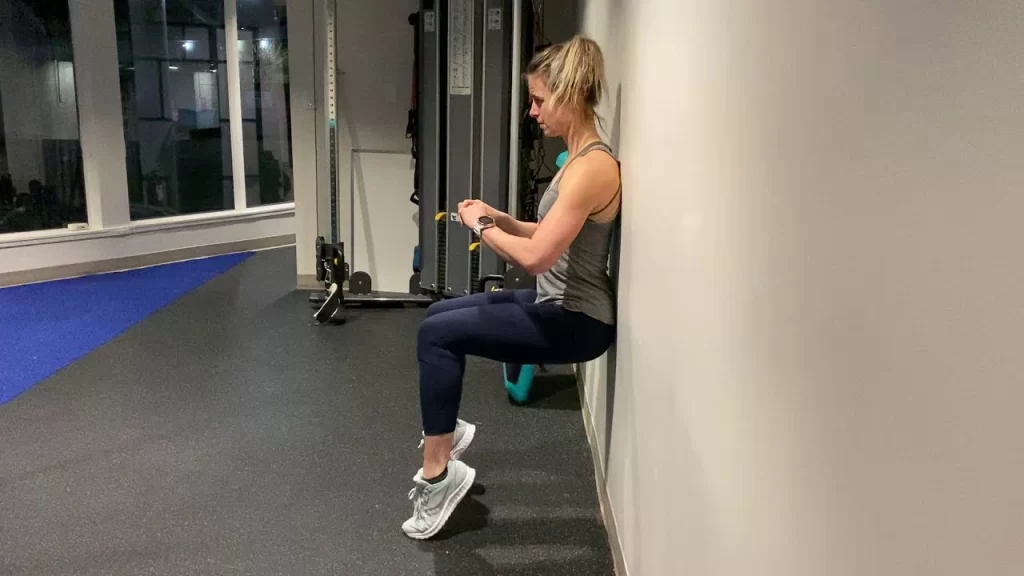
This exercise is intended to strengthen your quadriceps, which are the muscles in your thighs.
The quadriceps, hamstrings, and glutes were all worked.
- Resting your back against a solid wall, stand about two feet away from it.
- Your knees should form an angle of approximately 90 degrees when you flex them and drop your bottom. Your body should be in a position just like your chair-sitting posture.
- Hold this posture for at least 15 seconds. Maintain interaction with the wall by keeping your hips, shoulders, and knees above your ankles.
- Do two or three rounds.
While maintaining this posture, you’ll experience your thighs getting tighter and more exhausted
Experiment with moving backwards and forwards in between driving your weight down along your toes and your heels. Driving down by the use of your heels will focus on your glutes while driving down your toes will focus on your quadriceps.
Just make sure that your knees do not go out behind your toes, and while you putting weight on your toes, don’t put excessive force on the knees.
High plank hold

The high plank hold is a very beneficial way to take part in many muscles tissue in your body
The abdominals, quadriceps, glutes, muscles of the arms, chest, and shoulders are working in this exercise
It is Start with a kneeling pushup with your hands and shoulders put in some distance
Then Push your both hands into the ground and straighten your knees, pushing in downward direction your feet to get your body into a high plank posture. Your body should look as if you are going to perform the getting up from the position of a pushup. Make sure your both hands and shoulders are on the same level, your legs are straight, and your core is engaged.
Take a grip in this posture for about 20 to 60 seconds, otherwise, as long as you can keep the proper position. Do 2 more rounds of the same exercises in the same way
Side plank
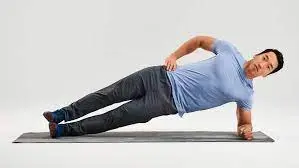
The side plank is outstanding for involving your oblique muscle, which is placed on the sides of your midsection.
You can also use a yoga mat.
External/Internal Obliques, spinal stabilizers, quadriceps, glutes, serratus anterior, shoulder stabilizers, and hip abductors are working in these isometric exercises
You should Lie down on your left side with your legs straight, and keep your hips, knees, and feet in one line. Bend your left elbow and put your forearm on the floor beneath your shoulder.
Press your left forearm into the floor to lift up your torso and hips off the ground. Maintain your core tight and make sure you are creating a straight line from head to heel.
Elevate your right arm straight directly facing the air, or put it by your side.
Maintain this posture for about 10 or more seconds. Then, change the sides.
If you do like a higher level task, do the side plank with the lower arm straight.
Lower squats
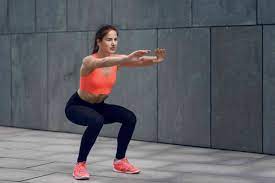
Specifically, you can convert many exercises into isometric exercises by kipping your body into contraction. Just like squats
quadriceps, glutes, and hamstrings muscles are working during lower squats
First Stand with your feet somewhat apart. If it’s more comfortable, you can stand with your hands out in front of you or on your hips with your toes slightly pointed outward.
While bending your knees, gently move your hips toward a sitting posture. Do not force your knees forward.
Keep lowering yourself until your butt is just over knee height. If you are unable to go much lower, position yourself so that your thighs are parallel to the ground. Keep your heels down, your feet firmly planted, and your spine long and straight.
you have to keep this posture for about 10 to 30 seconds. then back to the position where you were started
Complete 3–5 rounds.
Overhead hold
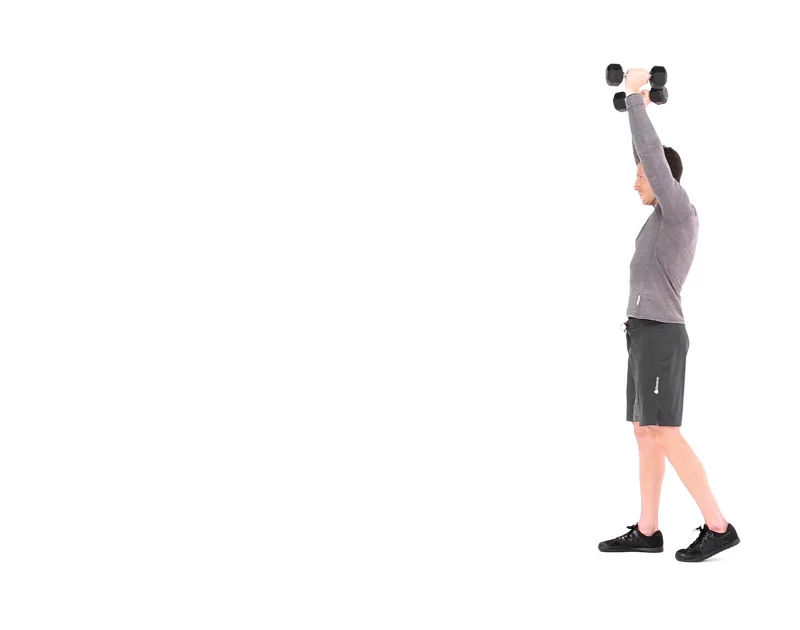
Overhead holds are one type of task for the endurance of your shoulder girdle muscles.
You may need something that lights to the medium weight which is Starting with a 5 to 10-pound plate, dumbbell, or kettlebell, you can Raise the weight as you found necessary
upper trapezius, shoulder girdle muscles, triceps, and core muscles are working during the overhead hold
Start with Extending your arms more than your head level and keep the weight constant. Make sure you are involved in your core muscles.
Ensure to put your arms extended and equal with your shoulders. Bending your arms will involve different muscles of arms like your biceps and triceps muscles.
Maintain the weight above your head for about 20–30 seconds rest. Though, you should pause before this if you’re feeling you may fail to hold the weight.
You should repeat this exercise for 2 or 3 rounds
Raising the task by standing on one leg while keeping the weight.
Gluteal bridging
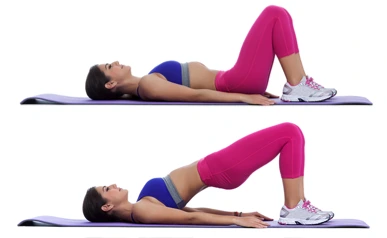
This exercise will easily become liable for any person who is looking to increase the strength of their back muscles
You can use yoga mate if you want
hamstrings and glutes, core muscles are working during gluteal Bridge exercise
Firstly you should lie down on your back with your knees should be bent and make sure your arms should be by your sides. Your heels have to be somewhat around 12–16 inches apart from your butt.
Push towards your heels, support your core muscles, and force your pelvis in the upward direction by compressing your gluteal muscles. Make sure your ribs do not shimmer during these motions. Maintain your tailbone somewhat insert, abdominals involved, and your feet should be leveled on the floor.
You will experience your glutes and hamstrings muscles starting to tire. Do not let the feeling of your hips go down or your back arch.
Do the 2 to 3 rounds with the hold of 30 seconds in between.
V sitting
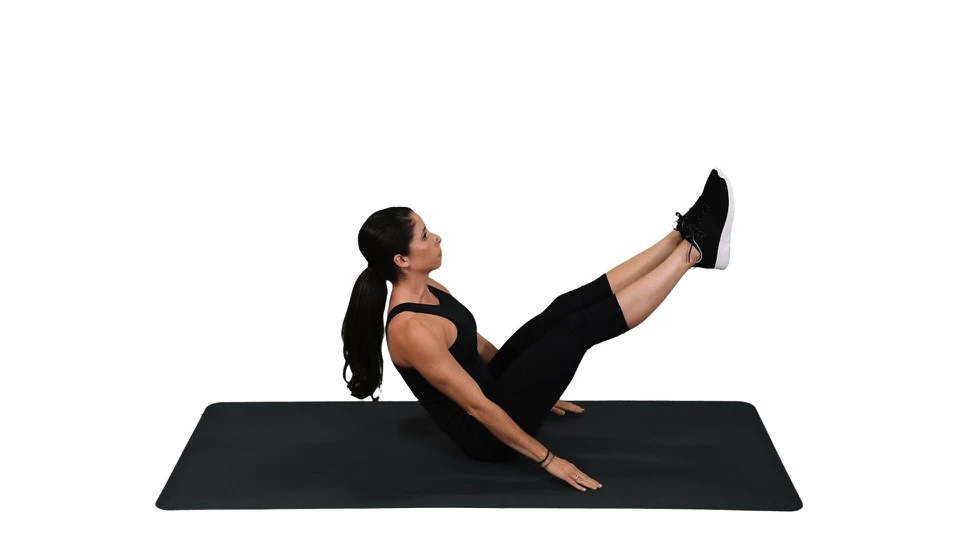
The V-sit is useful for your core muscle stability and as well as creating core muscle strength.
You can use a yoga mat.
abdominals and hip flexors muscles are working during these isometric exercises
Firstly Sit on your buttocks with your knees bent and your foot flat on the ground.
While involving your core muscles, straighten your legs to take your foot off the ground and create a “V” shape with the help of your body as well, particularly with your legs. You can put your arms by your side to make the exercise easy,
or you can take them straight overhead to make it more challenging. Maintain your back completely straight, and do not do the rounding of your shoulders. Keep breathing during the whole exercise.
If keeping a completely straight-leg posture create it hard to maintain your spine long or makes your hip flexors work high, then you can bend your knees a little to lengthen your back and involve the abdominals muscles more.
Keep this posture for about 15 seconds, or as long as you can while keeping the proper position.
You have to do 2 to 3 rounds of this exercise
Calf muscles raising and holding

The calves are generally not focused during exercises but are very necessary to maintain strong. in this isometric exercise, you will hold the top posture of the calf raise. Except for doing just normal calf raising which is moving in upwards and downward direction.
If you want then you can take wall support during exercises.
Calves (gastrocnemius, soleus)
Muscles are working during these isometric exercises
Firstly Stand with your feet hip-distance away. You are supposed to stand about 2 feet apart from a wall for support.
With the use of your hands on your hips or holding lightly opposite to a wall, press into your feet and lift your heels off the surface.
Maintain this posture for about 20–30 seconds.
Do.this exercise for 2 to 3 round
To make it more challenging, try to do this exercise on one foot only. Then change the sides.
Summary
Isometric exercise involves holding a static position for an extended period to build muscle strength and endurance. However, there are some disadvantages to this type of exercise, including a limited range of motion, the plateau effect, its time-consuming nature, not being suitable for all fitness levels, and a risk of injury if proper form and breathing techniques are not maintained. It’s essential to consider your fitness level, goals, and any underlying health conditions before incorporating isometric exercises into your workout routine.
FAQ
Yes, isometric exercises can be done anywhere as they do not require any equipment
Yes, isometric exercises can be modified to suit all fitness levels, including beginners.
Hold each isometric exercise for as long as possible, gradually increasing the time as you build strength and endurance.
It is recommended to do isometric exercises 2-3 times per week, in addition to other forms of exercise




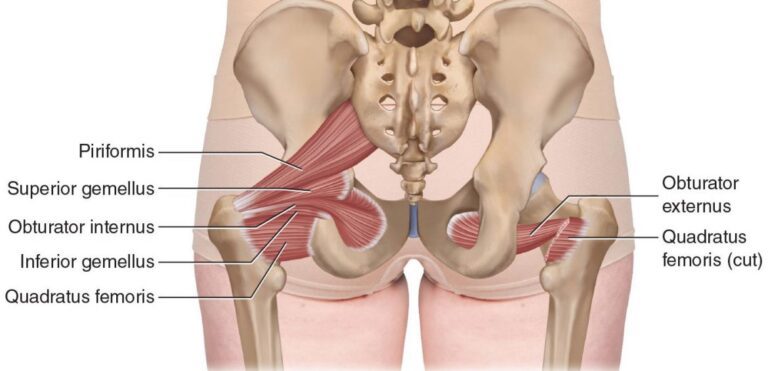
4 Comments